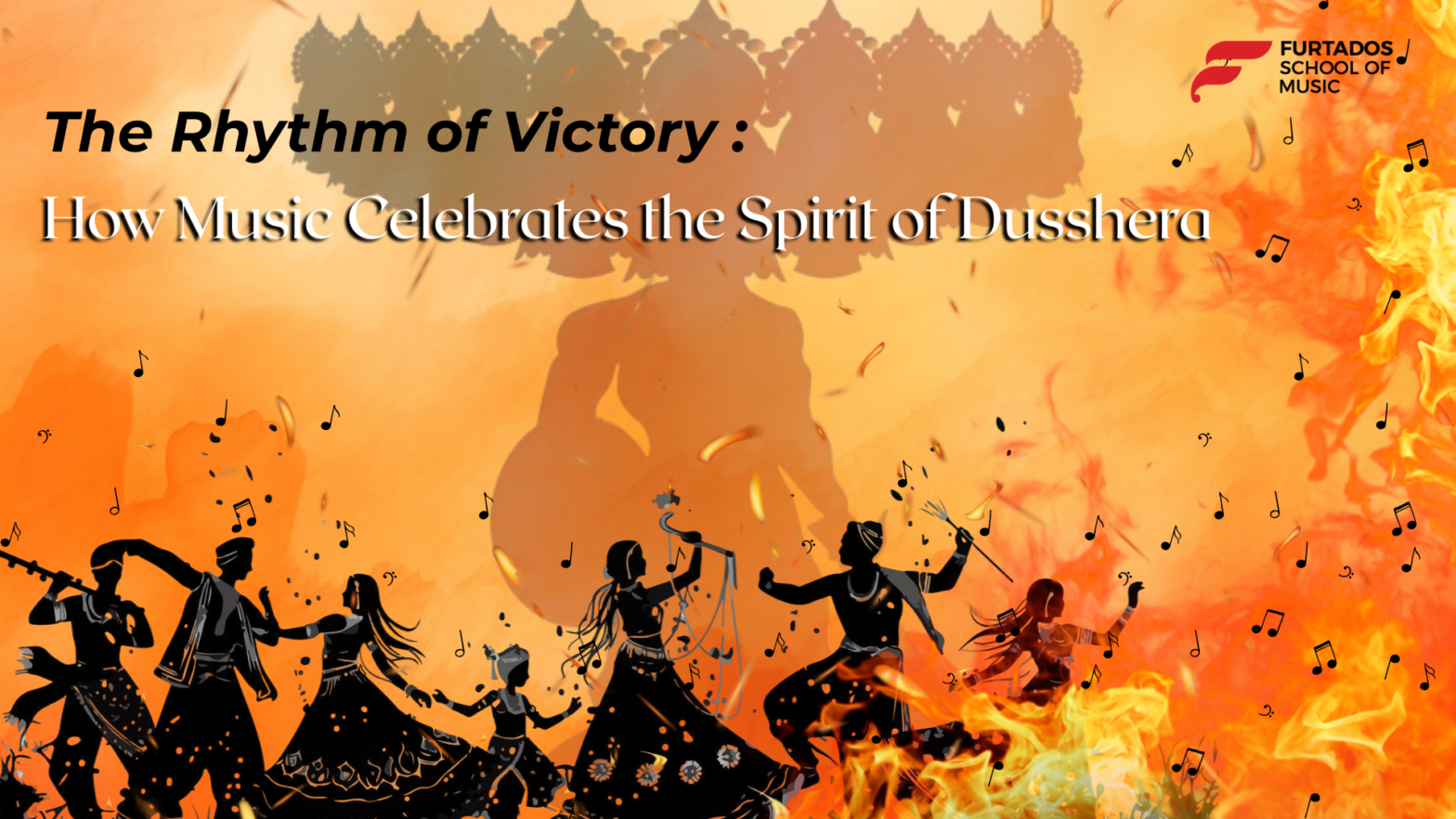Every festival in India carries its own rhythm — a pulse that echoes through traditions, rituals, and celebrations. Dusshera, the festival that marks the triumph of good over evil, is no exception. From the powerful beats of the dhol to devotional songs sung in praise of Goddess Durga and Lord Rama, music plays a central role in how we celebrate this festival of victory. It does more than add sound; it gives the festival its heartbeat, lifting spirits, uniting communities, and reminding us of timeless values.
Music as a Language of Tradition
Dusshera is celebrated in diverse ways across India. In the north, grand Ramlila performances recount the story of Lord Rama, and music is woven into every scene — narrations sung in folk styles, dramatic background scores, and the crowd chanting along during climactic moments. In Bengal and the east, the soundscape is filled with dhak drums, conch shells, and devotional songs during Durga Puja, culminating in Dusshera. Down south, Carnatic music and classical dance become part of temple festivities, blending rhythm and spirituality.
No matter the region, music becomes the bridge between mythology and modern life — it retells legends in a form that every ear can understand.
The Pulse of Festivity — Instruments That Define Dusshera
Certain instruments have become synonymous with the festival’s spirit.
- The Dhol & Dhak: Their thunderous beats echo during processions, energizing entire communities as idols are carried through the streets.
- Conch Shell (Shankha): A symbol of auspicious beginnings, its sound is believed to purify the environment and mark victory.
- Shehnai & Flute: Played in temples and homes, their softer, melodic tones bring a sense of calm amidst the intensity of celebration.
- Tabla & Mridangam: Adding layers of rhythm to devotional songs, they symbolize the discipline and precision behind musical expression.
These instruments do not merely entertain — they embody the collective joy, devotion, and resilience that Dusshera represents.
Victory Narrated Through Song
Every story needs a soundtrack, and Dusshera’s soundtrack is woven from bhajans, folk songs, and chants. In Ramlila performances, for instance, songs describe Rama’s journey, Sita’s devotion, and Ravana’s downfall — each moment amplified by rhythm and melody.
In Durga Puja, Aarti songs rise like a crescendo of faith, with voices blending into a chorus that celebrates the Goddess’s triumph over Mahishasura. Children learn these songs at home or in school, making music an important way traditions are passed down generations.
Lessons from Music During Dusshera
Music isn’t just about sound; it mirrors the deeper values of the festival:
- Discipline and Practice: Just as victory comes through focus and resilience, mastering music requires dedication and patience.
- Unity in Diversity: When a community sings together, every voice matters — a reminder of the power of collective strength.
- Expression of Emotions: From joy to devotion, music allows us to express what words alone cannot, much like the emotions behind Dusshera’s story.
At Furtados School of Music, these values reflect in how students learn — not just to play an instrument, but to understand the power of music as a life skill.
A Modern Touch — Dusshera in Today’s Soundscape
While traditional instruments remain at the heart of celebrations, modern adaptations are reshaping Dusshera’s music too. Young artists mix devotional chants with electronic beats, choirs perform fusion renditions of bhajans, and classical ragas meet contemporary arrangements. This evolution ensures that the essence of the festival stays alive, while also appealing to new generations.
Even in homes, families curate festive playlists that blend old recordings with fresh interpretations. This shows how music — timeless in spirit — adapts effortlessly with every era.
Conclusion
The story of Dusshera is one of courage, righteousness, and hope. Music makes these values tangible; it gives rhythm to legends and melody to emotions. Whether it’s the booming beat of the dhak during idol immersion, the soulful tune of a flute in temple courtyards, or a fusion playlist at home, music ensures that the festival’s spirit is not just remembered, but felt.
This Dusshera, let us listen closely to the sounds around us — the chants, the instruments, the songs of devotion. They are not just music; they are the rhythm of victory itself.
